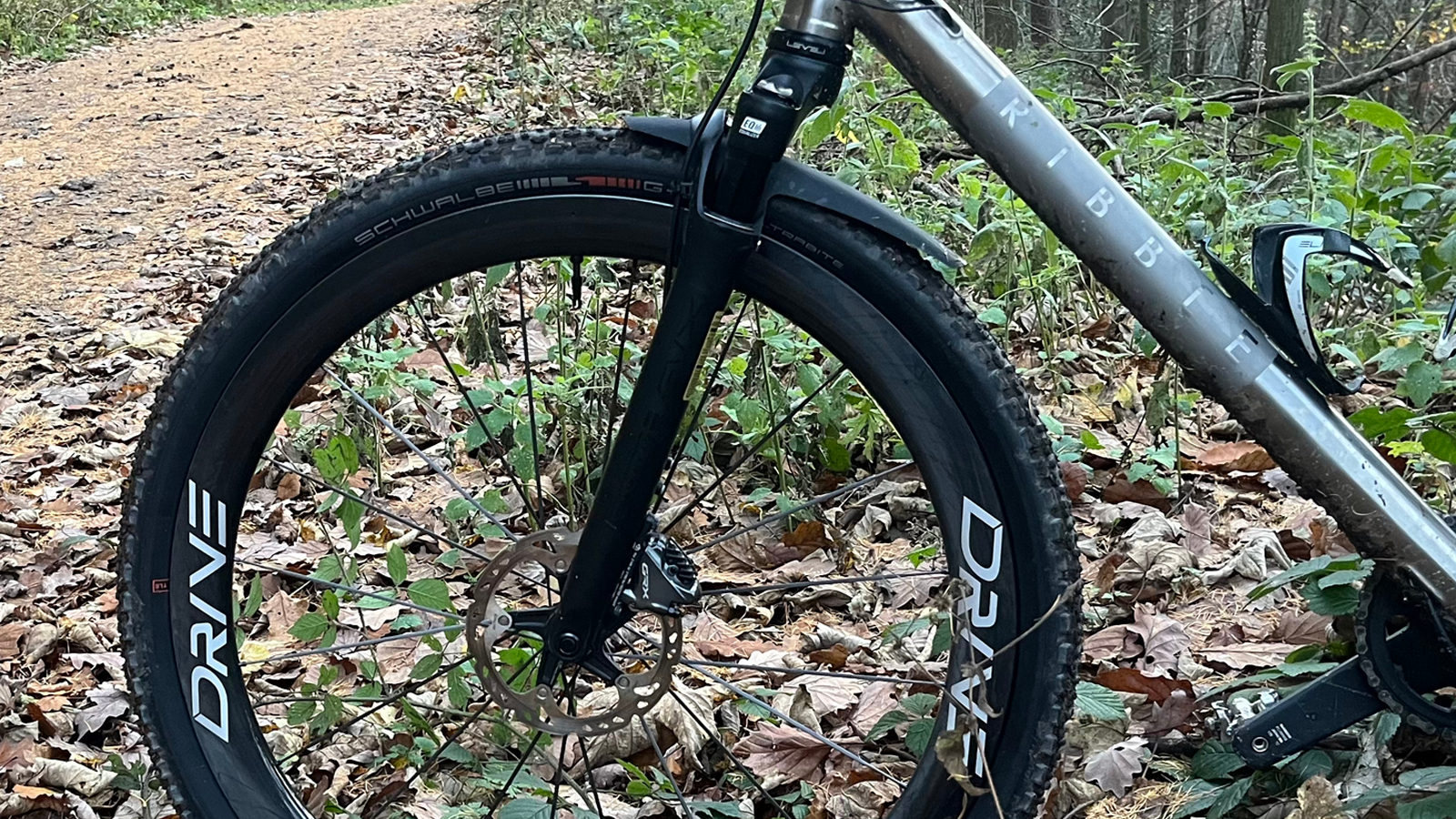
SR Suntour is a brand we featured in our A to Z of MTB suspension, but not one we have had much experience in testing, which is strange given they are one of the biggest suspension manufacturers in the world. Most products they produce are at the budget end of the spectrum. Still, they do make some very good high-end forks under other brand names such as DVO as well as their own, even making a fully electronically controlled setup ridden to success by Tom Pidcock at the Tokyo Olympics.
The GVX is SR Suntour's latest gravel suspension fork, and as most things gravel-related, whether or not it's necessary is entirely down to what your drop bar off-road riding entails. The GVX SF21 was first launched in 2020 and significantly undercut the two main options from Fox and Rockshox on price, yet it is still a rare sight on the trails. The latest version, the SF24 I have on test here, aims to improve upon the original while still being considerably less expensive than its rivals.
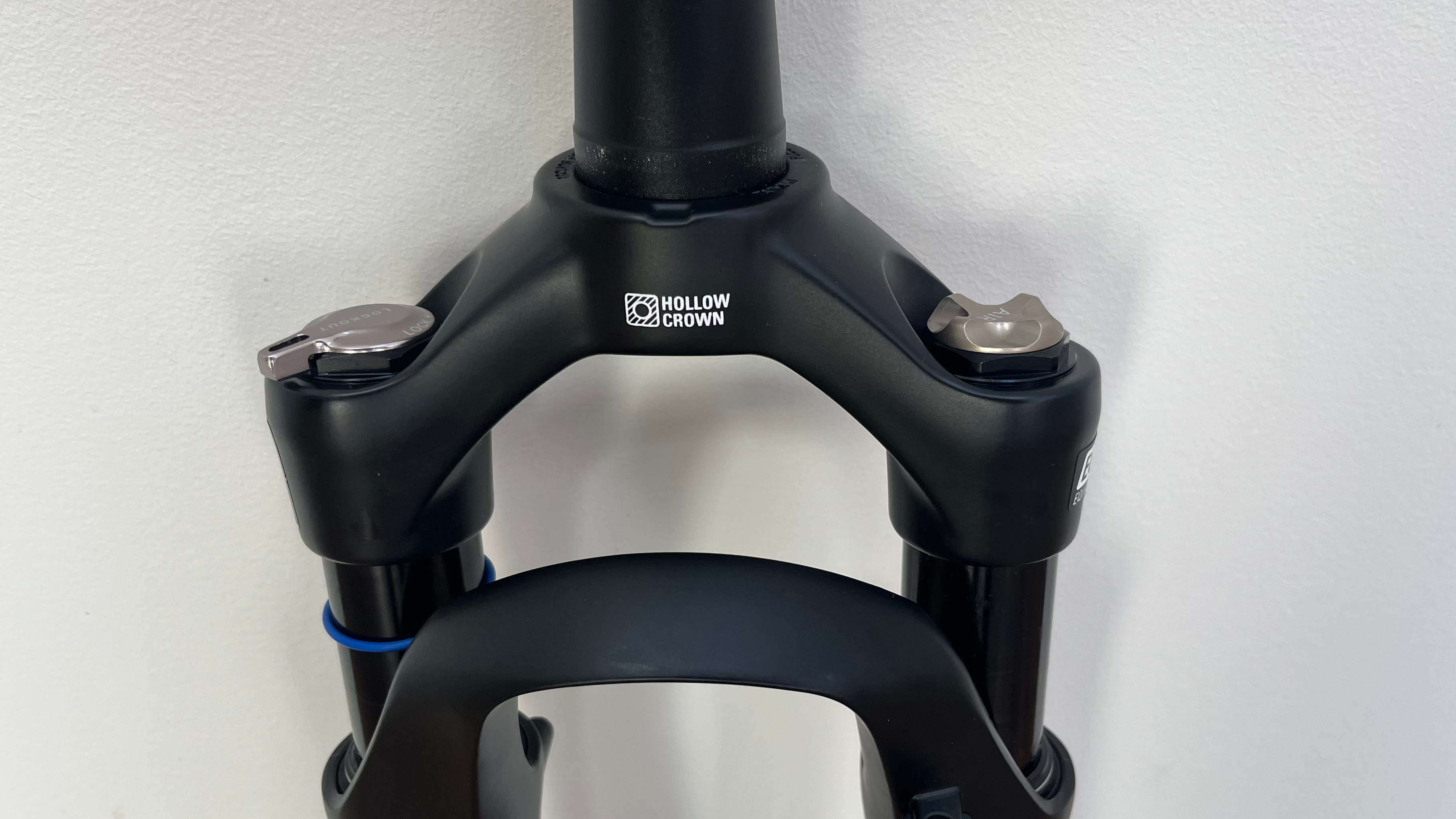
Design and specifications
The new GVX suspension fork is available in three travel variations, 40, 50, and 60mm, and gets two big updates from the original. A new hollow crown drops 120g over the original cast version, and mine came in at 1,628g on the scales with an uncut steerer, which, although an improvement on the original, is still over 300g heavier than the RockShox Rudy Ultimate Xplr gravel fork and Fox 32 Taper cast. The second improvement is with the fork’s negative air chamber. On the GVX SF24, they've given it the largest negative-to-positive ratio of any air fork in their range. This is designed to give the fork maximum small bump performance to dial out the high-frequency buzz often encountered on gravel rides.
The air spring uses the SR Suntour EQ Equalizer system. Simply pump the fork up as usual, and it will balance the positive and negative air chambers, much like most other systems on the market. It comes supplied with six volume spacers already fitted, which is the maximum permitted. The fork ran better without any fitted, but there is plenty of scope to tune the feel of the fork should you wish.
The fork looks similar to the early ’90s road forks from Rockshox, though these have beefier 32mm stanchions mated to a tapered steerer, so will be significantly stiffer. Maximum tire clearance is up to 45c, although I rode with a Schwalbe G One Ultrabite in a 50mm size when the trails got muddy with plenty of room to spare. There's also a neatly integrated fender, which does an okay job of keeping a bit of crud from flying up, but there are mounts lower down if you want to fit a full-length proper mudguard.
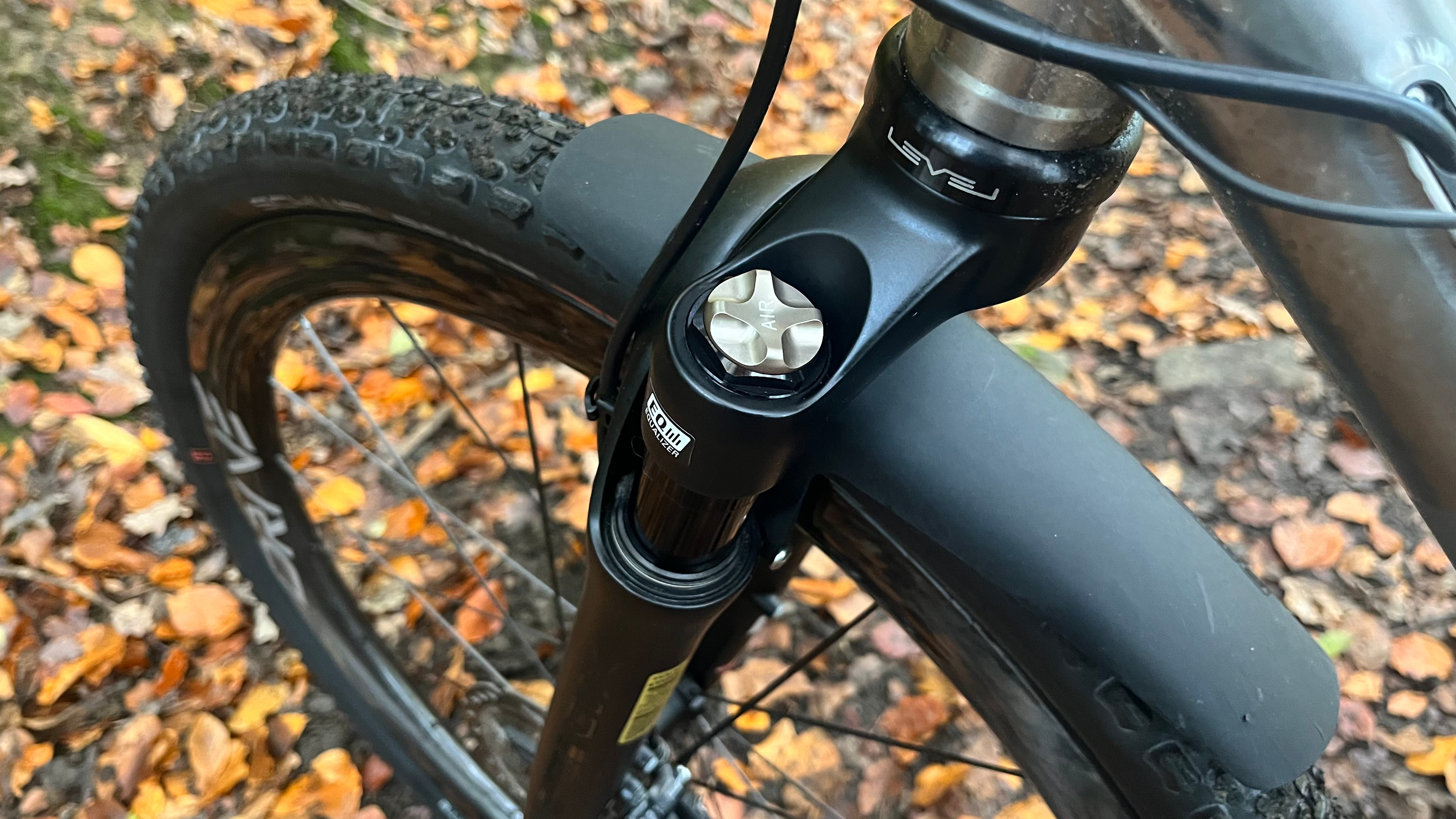
Like the first version, this fork is e-bike rated, which means it's been designed to deal with the stresses and strains, the extra weight, and the higher speeds associated with a motor-driven bike. This also goes some way to justifying the difference in weight between this and its competitors, as a brand uses thicker wall tubes and extra material to increase the fork chassis stiffness.
When fitting a suspension fork to a bike designed for a rigid fork, one thing to bear in mind is the change in Axle to fork crown height. Putting a longer fork in can affect the head angle and bottom bracket height, greatly impacting handling. The 40mm travel version I had on test measured 436mm without any sag, 28mm longer than the carbon fork it replaced. Luckily, that was pretty close, and even closer, once you consider the 8-10mm sag once I was on the bike, and it didn't make any noticeable difference to the bike's handling.
Damping duties are taken care of with their PCS system. It is a shim-based damper with adjustable compression and rebound damping designed to be a simple, reliable setup. There are no fancy dials here, a large dial at the top of the right side of the fork deals with compression damping using a simple lock or open lever, which makes sense given the short travel and designed usage. Rebound damping, however, is much harder to adjust. It's situated at the bottom of the fork with no external adjuster. You need to use a long 3mm Allen key to adjust it, which on its own isn't that bad however, it is only accessible by removing the axle, which makes trailside adjustments a pain.
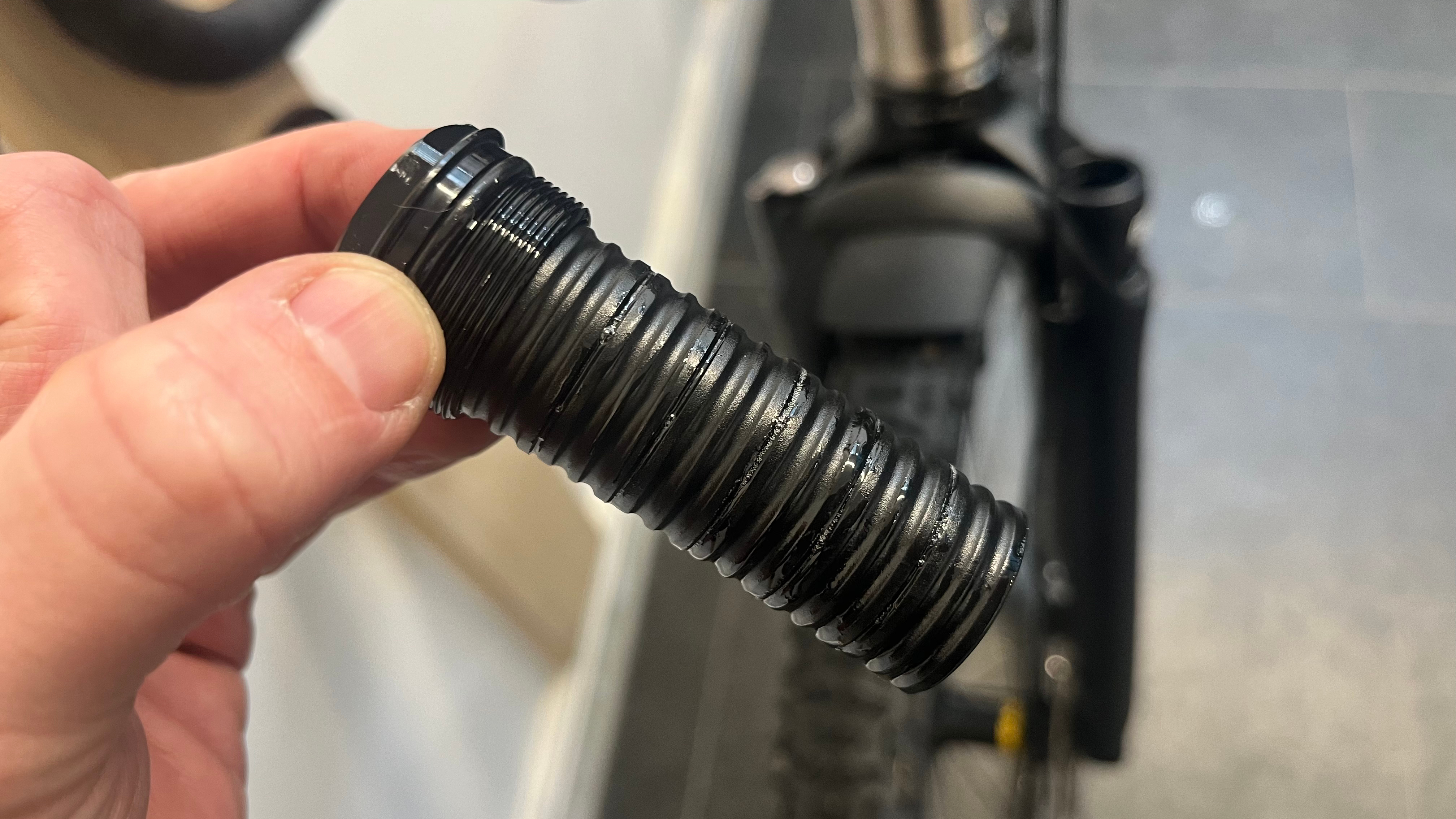
Performance
There are no settings on the fork or any fancy setup apps. Their website has a guide, but I found the suggested settings to be way off. The guide can be found on page 12 of a general guide for all forks and suggests 75-85 psi for my weight in riding kit of just over 80kg. On a fork with as limited travel as this, I would run much less sag, around 10 percent compared to the usual 25-30 percent, but with the recommended settings, I used at least 40 percent of the travel. It's also worth noting that you must cycle the fork a lot during inflation to ensure both chambers are filled. This could be a quirk of the EQ system, as Guy Kesteven found the same when testing the much longer travel Suntour Durolux 36 RC2 fork.
The fork is shipped with a full complement of spacers fitted. I removed these as I felt the already small-capacity air spring would benefit from more volume. Once I had done this and gotten the chambers equalized, I settled on 160psi of pressure, which is far more than suggested in the manual but gave me around 10 percent of sag and plenty of support while maintaining good small bump compliance.
The damper works well, with a solid lock and enough support with no spikes in travel or odd behavior, but the adjustment for the rebound is a letdown. Having to remove the axle and carry an extra Allen key with me, as most multi-tool's aren't long enough, was a real pain when making trail-side adjustments. In practice, I rode with far less rebound damping than I would on a trail fork. I preferred the fork to quickly return to its sag point and not sit too far into its travel on repeated hits, and because it is much shorter travel, there's less of the pogo stick feeling you would get from a longer travel fork in a similar setting.
Once set, though, they felt great with mile after mile of trail-smoothing suspension. It helped aid comfort on longer rides as well as opening up the choice of trails I could tackle aboard my Ribble Gravel Ti Pro compared to a rigid fork setup. The extra weight is noticeable, especially when standing up, but there is minimal flex and the lockout works well on extended road climbs. That said, I tended to leave the fork fully open on off-road climbs, as I found the extra cushioning and grip beneficial on my local rocky trails.
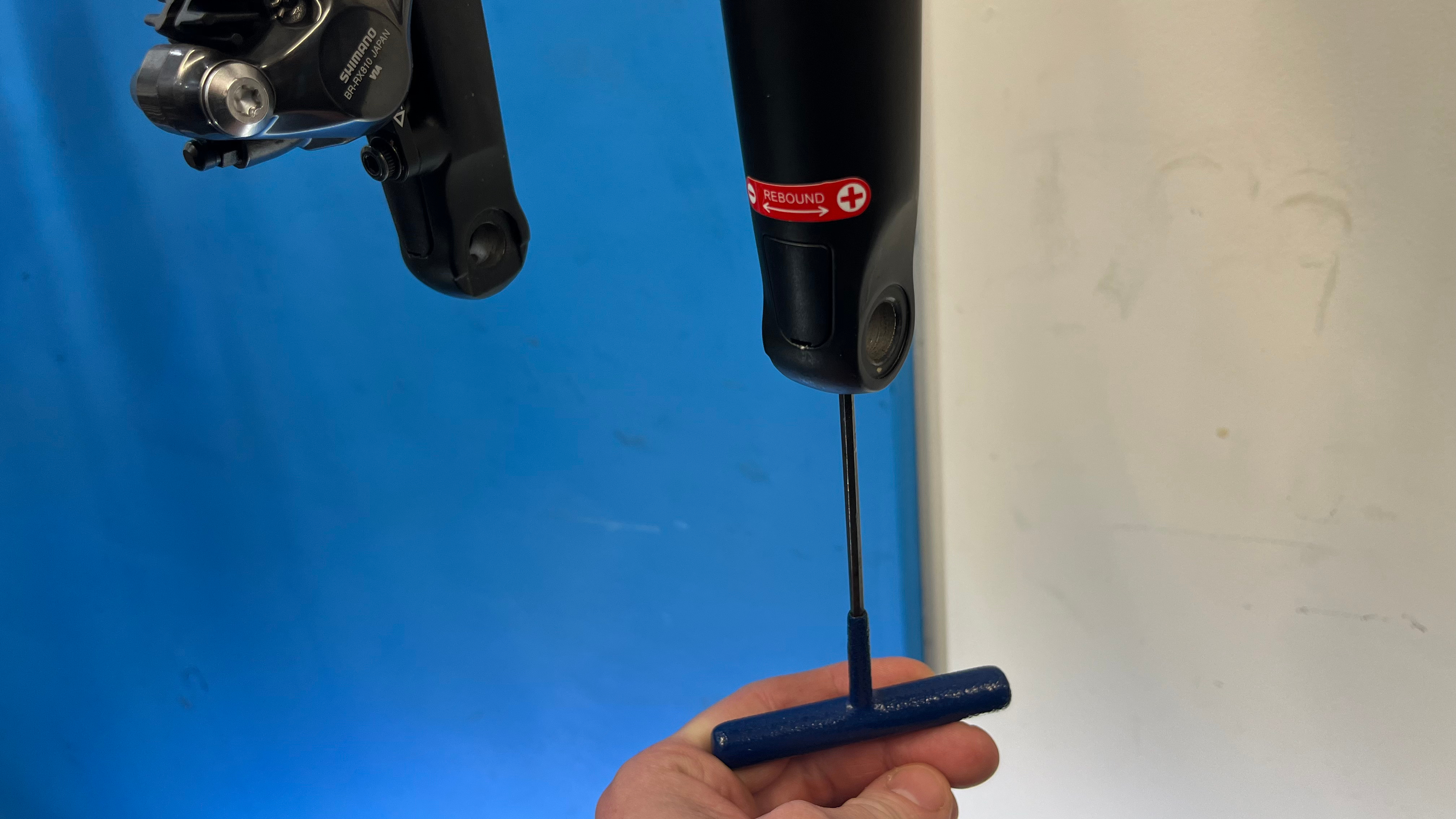
Verdict
Whether or not you need suspension or if it is in the ‘spirit of gravel’ depends entirely on the terrain you ride, and I must admit I was skeptical of gravel forks. After all, 40mm isn't much travel, but I was pleasantly surprised by how much of a difference it made to my riding. It doesn't turn your drop bar bike into an MTB, but it adds grip, control, and reduces fatigue-causing vibrations on long rides.
It has niggly setup issues and could do with a more accurate setup guide, but with some trial and error, these can be dealt with if you are willing to put in the time. The extra weight is noticeable, but if your gravel is on the rockier end of the spectrum, it's a price worth paying.
The lower cost can't be ignored either when compared to the more established brands, which could make this the ideal option for those suspension-curious gravel riders out there.
Tech specs: Suntour GVX SF24 gravel suspension fork
- Price: $575 / £520 / €624
- Wheel size: 700c or 650B
- Travel: 40mm (as tested) / 50mm / 60mm
- Stanchion diameter: 32mm
- Offset: 45.4mm as tested / 46.2mm / 47mm
- Weight: 1,628 grams
- Brake mount: Flat mount
- Colors: Matt black







